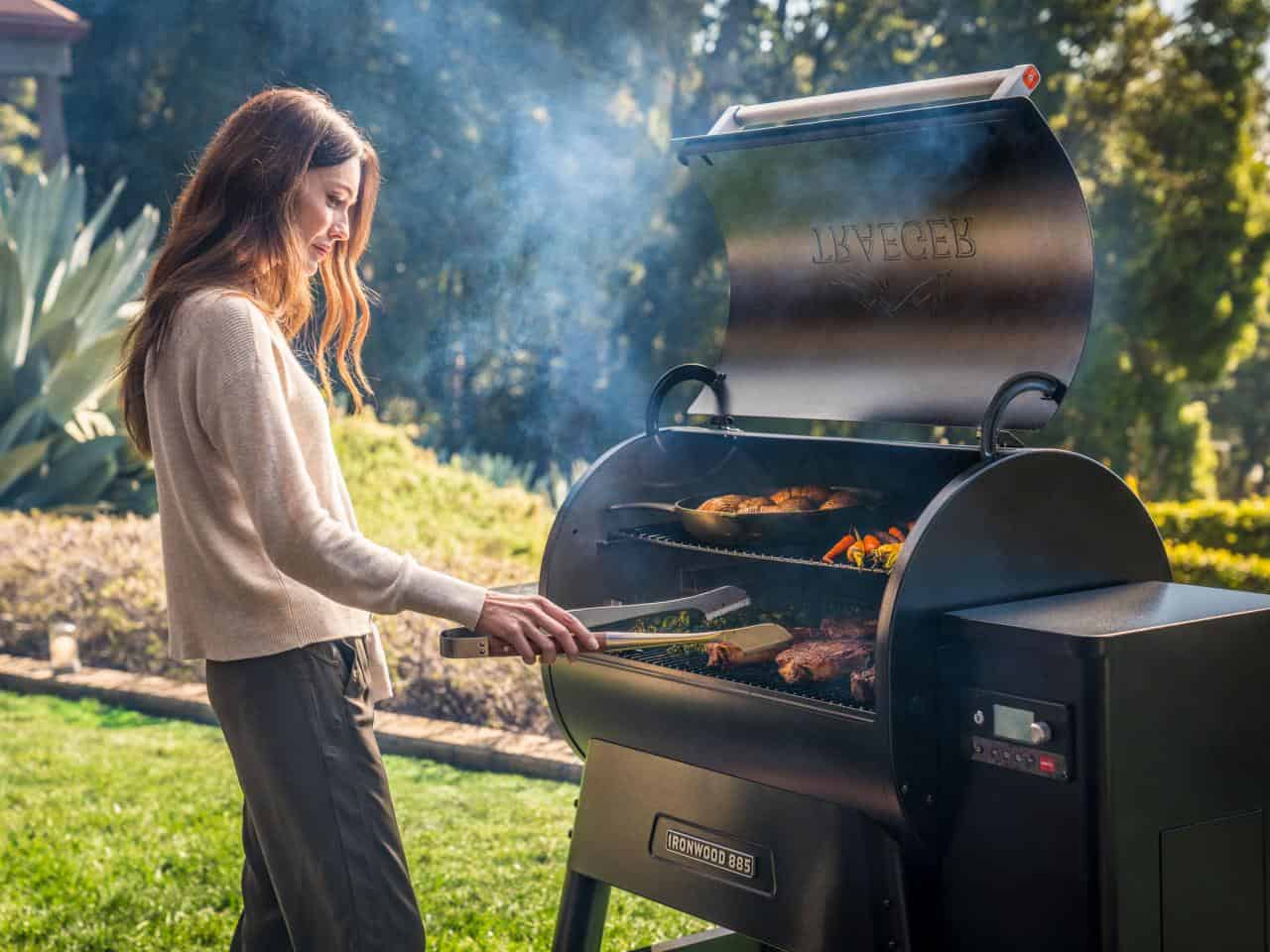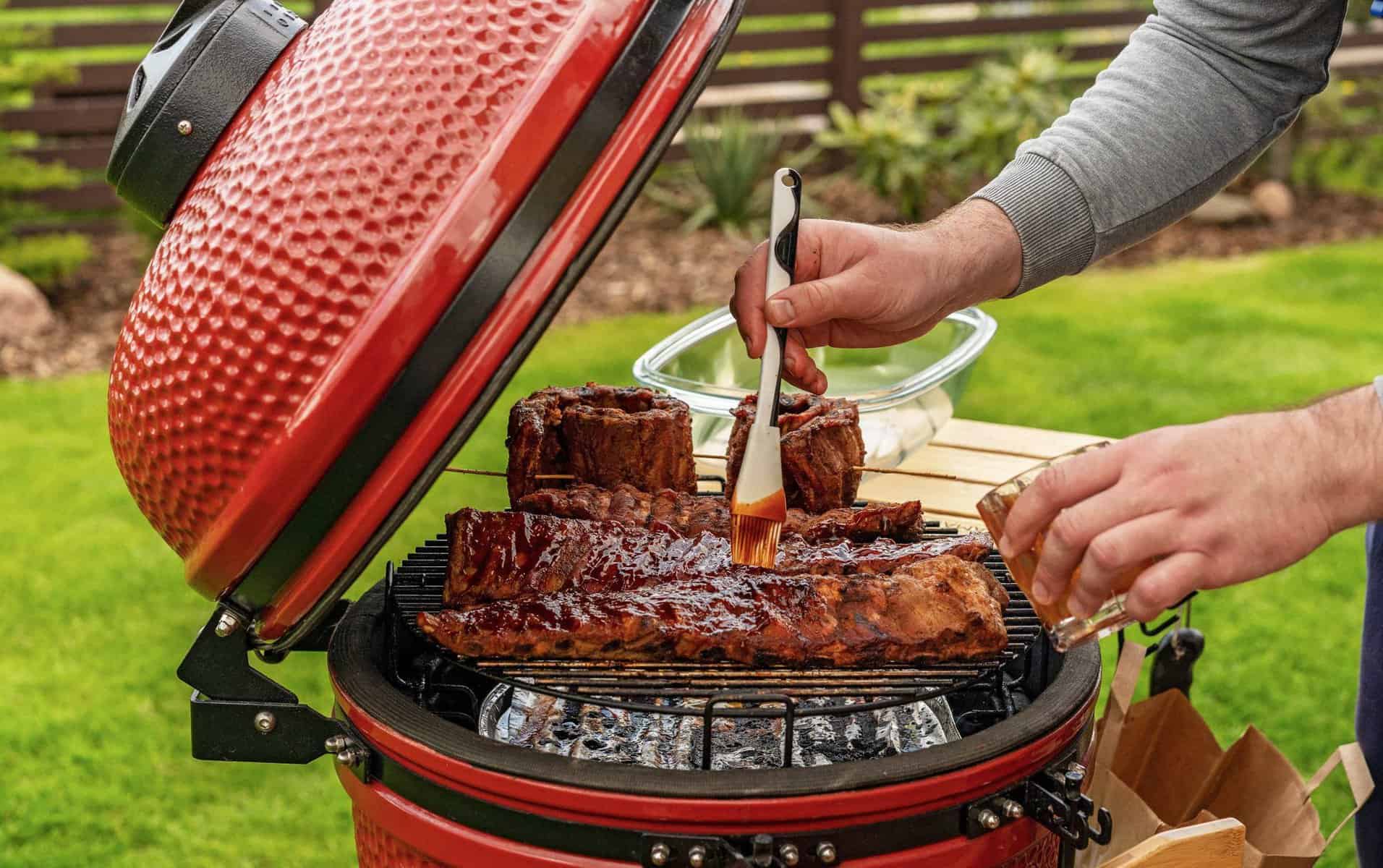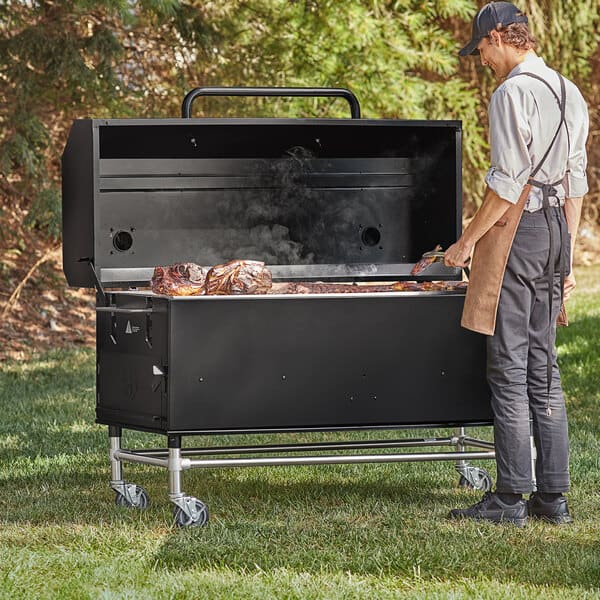If you’ve ever savored the rich, smoky flavor of barbecued ribs or a succulent smoked brisket, you’ve experienced the magic of food smoking. But what exactly is a smoker?
In this article, we’ll dive deep into the world of smokers, exploring their types, how they work, and the benefits they offer. We’ll also provide practical tips for using and maintaining a smoker, ensuring you’re well-equipped to create delicious smoked dishes at home.
Types of Smokers
| Feature | Charcoal Smokers | Electric Smokers | Gas Smokers | Pellet Smokers | Wood Smokers (Offset/Stick Burners) |
|---|---|---|---|---|---|
| Heat Source | Charcoal | Electricity | Propane/Natural Gas | Wood Pellets | Wood |
| Flavor | Strongest, smoky | Mildest | Moderate | Moderate, adjustable | Strong, smoky |
| Temperature Control | More difficult | Easiest | Easier | Easiest | Most difficult |
| Fuel/Power Requirements | Charcoal, lighter | Electrical outlet | Propane tank | Wood pellets, electricity | Wood |
| Maintenance | High | Low | Moderate | Moderate | High |
| Portability | Varies (some portable) | Less portable | Less portable | Less portable | Least portable |
| Price | Lower | Mid-range | Mid-range | Higher | Higher |
| Best For | Flavor enthusiasts, traditional BBQ | Beginners, convenience | Convenience, consistent results | Set-it-and-forget, versatility | Flavor, experienced pitmasters |
Charcoal Smokers
Charcoal smokers are beloved for the traditional, robust flavor they impart. They use charcoal as the primary heat source, and the food is cooked slowly over low heat, allowing the smoke to infuse deeply.
Pros:
- Rich, smoky flavor
- High heat for searing
Cons:
- Requires more monitoring and skill
- Longer startup time
Popular Models:
- Weber Smokey Mountain
- Big Green Egg
Electric Smokers
Electric smokers are user-friendly and convenient, using electricity to generate heat. They’re great for beginners who want to achieve consistent results with minimal effort.
Pros:
- Easy to use
- Consistent temperature control
Cons:
- Less authentic smoke flavor
- Requires electricity
Popular Models:
- Masterbuilt Digital Electric Smoker
- Bradley Digital 6-Rack Smoker
Gas Smokers
Gas smokers use propane or natural gas to heat the smoker, offering a good balance between flavor and convenience. They’re faster to heat up than charcoal smokers and easier to control than wood smokers.
Pros:
- Quick heat-up time
- Easy temperature control
Cons:
- Requires a gas supply
- Less smoky flavor than charcoal or wood smokers
Popular Models:
- Camp Chef Smoke Vault
- Cuisinart COS-244 Vertical Propane Smoker
Pellet Smokers
Pellet smokers use compressed wood pellets as fuel, combining the ease of electric smokers with the flavor of wood. They’re versatile and can be used for smoking, grilling, and even baking.
Pros:
- Versatile cooking options
- Excellent smoke flavor
Cons:
- Higher initial cost
- Requires electricity for the auger and thermostat
Popular Models:
- Traeger Pro Series
- Pit Boss 700FB
Wood Smokers
Wood smokers are the traditional choice, providing the most authentic smoky flavor. They require skill and attention to maintain the correct temperature and smoke levels.
Pros:
- Unmatched flavor
- Authentic smoking experience
Cons:
- Steeper learning curve
- Requires more effort to maintain temperature
Popular Models:
- Oklahoma Joe’s Highland
- Char-Broil American Gourmet
How Smokers Work
The Smoking Process
Smoking is a method of cooking food by exposing it to smoke from burning or smoldering material, usually wood. The smoke flavors the food and can also help preserve it. There are two main types of smoking:
- Hot Smoking: Cooks the food while adding flavor, typically between 225°F and 250°F.
- Cold Smoking: Adds flavor without cooking, usually below 90°F, and is often used for items like cheese or fish.
Components of a Smoker
Smokers come in various designs, but they share some common components:
- Smoke Chamber: The main area where the food is placed.
- Firebox: Where the fuel (charcoal, wood, pellets) is burned.
- Racks: Shelves where food is placed inside the smoke chamber.
- Vents: Used to control airflow and temperature.
Types of Wood and Their Flavors
The type of wood you use can significantly impact the flavor of your smoked food. Here’s a quick guide to some popular woods and their associated flavors:
| Wood Type | Flavor Profile | Best For |
|---|---|---|
| Hickory | Strong, smoky, bacon-like | Pork, ribs, ham |
| Mesquite | Intense, earthy | Beef, brisket |
| Applewood | Mild, sweet, fruity | Poultry, pork |
| Cherry | Sweet, fruity | Chicken, turkey, vegetables |
| Oak | Medium, versatile | Brisket, sausages, lamb |
Selecting the Right Wood
Choosing the right wood depends on the food you’re smoking and the flavor profile you desire. Here are some tips:
- Milder woods (Apple, Cherry): Great for poultry and fish.
- Stronger woods (Hickory, Mesquite): Ideal for red meats and game.
- Versatile woods (Oak, Maple): Suitable for a wide range of foods.
Techniques for Smoking Food
Preparing the Smoker
- Clean the smoker: Remove any old ash and debris.
- Add fuel: Load charcoal, wood, or pellets into the firebox.
- Preheat: Allow the smoker to reach the desired temperature before adding food.
Preparing the Food
- Brining: Soak the meat in a saltwater solution to enhance moisture and flavor.
- Seasoning: Apply rubs or marinades to add flavor.
- Resting: Let the meat sit at room temperature before smoking.
Smoking Methods
- Direct Smoking: Placing food directly above the heat source. Best for quick-cooking items.
- Indirect Smoking: Placing food away from the direct heat. Ideal for slow-cooking large cuts of meat.
Benefits of Using a Smoker
Flavor Enhancement
Smoking enhances the taste and texture of food, creating complex flavors that can’t be achieved through other cooking methods.
Preservation
Historically, smoking was used to preserve food before refrigeration. While less common today, smoked foods like jerky and smoked fish can still be stored longer than their fresh counterparts.
Versatility
Smokers aren’t just for meat. You can smoke vegetables, cheese, nuts, and even desserts, making it a versatile tool in your culinary arsenal.
Maintenance and Care
Cleaning the Smoker
- After each use: Remove ash and grease.
- Deep clean: Periodically clean grates, interior walls, and other components.
Regular Maintenance
- Inspect parts: Check for wear and tear, and replace as needed.
- Season the smoker: Apply a thin layer of oil to prevent rust.
Safety Tips
Using a Smoker Safely
- Location: Use your smoker in a well-ventilated area away from flammable materials.
- Monitoring: Never leave a lit smoker unattended.
- Protective gear: Use heat-resistant gloves and tools.
Popular Recipes
Beginner-Friendly Recipes
- Smoked Chicken Wings: Easy and quick, perfect for beginners.
- Smoked Salmon: Simple brine and smoke method.
Advanced Recipes
- Texas Brisket: Requires longer cooking time and attention to detail.
- Pork Shoulder: Involves brining, seasoning, and slow smoking.
Conclusion
Smoking food is a rewarding culinary technique that brings out deep, rich flavors in a variety of foods. Whether you’re a beginner or an experienced pitmaster, understanding the types of smokers, the smoking process, and the best practices for preparing and maintaining your smoker will help you create delicious, smoky dishes.
So fire up your smoker and start exploring the flavorful world of smoked food today!
Originally posted 2024-06-24 15:26:23.





